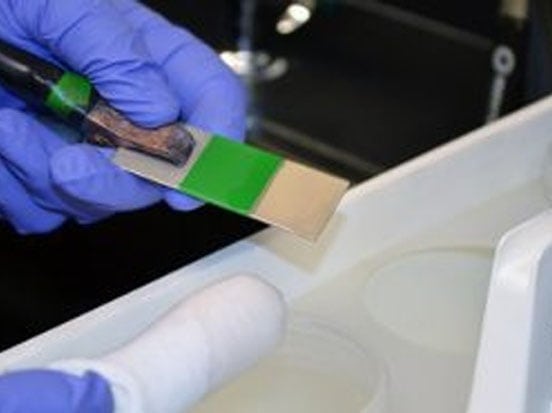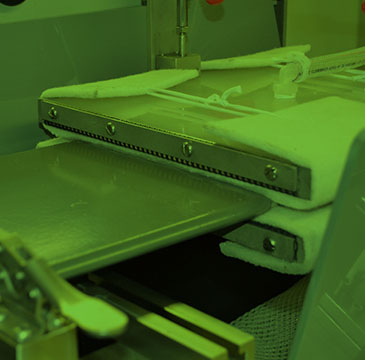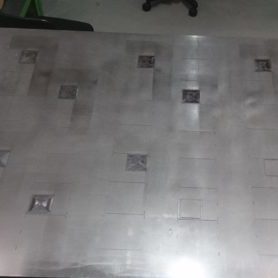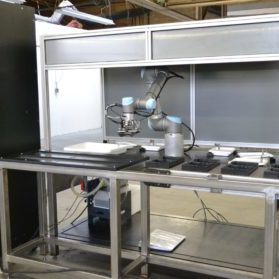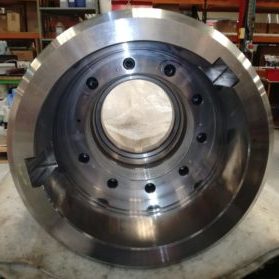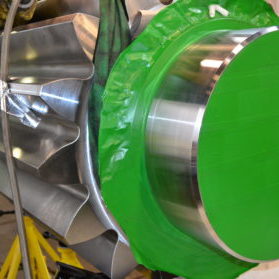Was ist selektive Beschichtung?
Selektive Galvanik ist eine portabel Beschichtungsmethode, die zur Verbesserung, Reparatur und Aufarbeitung von lokalisierten Bereichen auf hergestellten Komponenten verwendet wird.
Das SIFCO-Verfahren® ist die führende portabel Methode zur selektiven Beschichtung lokal begrenzter Bereiche ohne Einsatz eines Tauchbeckens. Es wird in erster Linie für die Oberflächenverbesserung von OEM-Komponenten, für dauerhafte Reparaturen und für die Wiederherstellung verschlissener oder falsch bearbeiteter Teile verwendet.
Die selektive Beschichtung umfasst Verfahren, bei denen die Lösung mit Hilfe von Pinseln oder gekapselten oder zellulären Durchflussgeräten aufgetragen wird.
Bürstenplattieren – Dies ist die primäre Technik, die von den SIFCO ASC-Technikern verwendet wird. Bei diesem Verfahren wird ein Gleichstrom, der von einem Gleichrichter geliefert wird, in einem Stromkreis verwendet, der vollständig ist, wenn eine Anode das zu beschichtende Bauteil berührt. Beim Bürstenplattieren dient die Anode als Bürste, die mit Baumwolle, Polyester oder anderen lösungshaltigen Materialien bedeckt ist. Sobald die Anode gründlich mit der Lösung gesättigt ist, wird der Niederschlag auf das negativ geladene Teil aufgebracht. Das Bürstenplattieren erfordert eine Bewegung zwischen der Anode und dem Teil. Dies kann geschehen, indem die Anode über das Teil gestrichen wird, indem das Teil bewegt wird und die Anode stehen bleibt oder indem beide bewegt werden.

Bürstenbeschichtung
This is the primary technique used by SIFCO ASC technicians. In this process, a direct current -supplied by a rectifier – is used in a circuit that’s complete when an anode is touching the component to be plated. When brush plating, the anode acts as the brush which is covered in cotton, polyester or other materials that hold solutions. Once the anode is thoroughly saturated in the solution the deposit is applied onto the negatively charged part. Brush plating requires movement between the anode and the part. This can be accomplished by brushing the anode over the part, by moving the part and keeping the anode stationary, or by moving both.
Brush plating is best suited for applications where single or low numbers of components are in need of repair or refurbishment. For applications with high quantities of components, SIFCO ASC provide custom solutions for automating the SIFCO Process®. Tailored solutions range from customized workstations through to fully automated systems
Erfahren Sie mehr über Bürstenbeschichtung >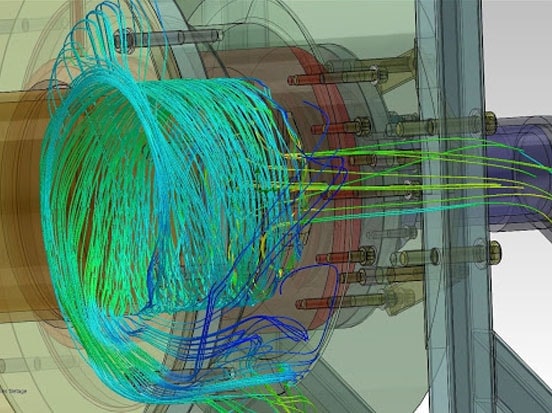
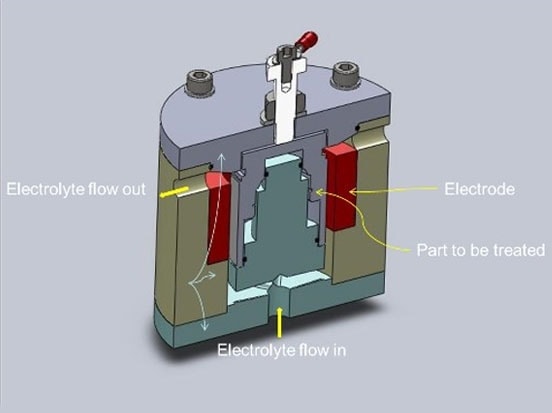
Verkapselndes Flow Plating
For applications where the surfaces to be treated are more complex and are not as easily accessible with brush plating, SIFCO ASC has developed a method for selective flow plating. In such cases, custom all-in-one tooling is used to isolate then pass plating solutions over the area.
State-of the-art, customized anodes are designed to match the complex geometry of the selected area. The tooling uses custom-fit seals to encapsulate the area and allows for space between the anode and the component. Electrodeposition occurs when the electric current is passed through the chemistry as it flowed over the area. In many cases, multiple steps – activation, rinse, plating, etc. – can be completed within the same tool and without removal of the part.
Flow plating is a “one piece flow” process. It provides the full history of all critical process parameters for each high value part plated. One piece flow also limits the amount of reworks in the instance of any process deviation.
Flow plating can be applied to small and large scale components alike, and can be equally suitable for low to high quantities. As with brush plating, if volumes are low, the operation can be performed manually, but for higher quantities SIFCO ASC offers fully automated flow plating systems
Erfahren Sie mehr über das Einkapseln von Flow Plating >Tropfenfreie Beschichtung
Für eine Vielzahl von Branchen – von Luft- und Raumfahrt über Militär, Schifffahrt, Petrochemie, Öl und Gas bis Papier – ist selektives Galvanisieren konventionellen thermischen Spritz- und Tankbeschichtungsverfahren vorzuziehen.
Wieso den? Seine Möglichkeit, vor Ort durchgeführt zu werden, macht es einfach zu einer von Natur aus umweltfreundlichen Option. Ganz zu schweigen davon, dass das System tragbar ist – sodass es direkt zu einem bestimmten Teil oder einer bestimmten Komponente gefahren werden kann.
Das SIFCO Das bedeutet, dass alle chemischen Lösungen direkt an der Oberfläche des Werkstücks in das Lösungsmanagementsystem des Wagens zurückgeführt werden, ohne dass Schalen zum Auffangen der Lösung verwendet werden müssen – wodurch eine saubere und effiziente Arbeitsumgebung entsteht.
Erweitertes Lösungskontrollsystem >

 Chinese (Simplified)
Chinese (Simplified)  English (UK)
English (UK)  French
French  Spanish
Spanish  Swedish
Swedish 

